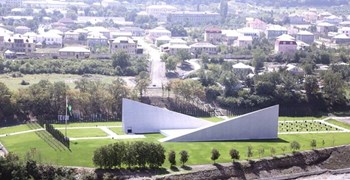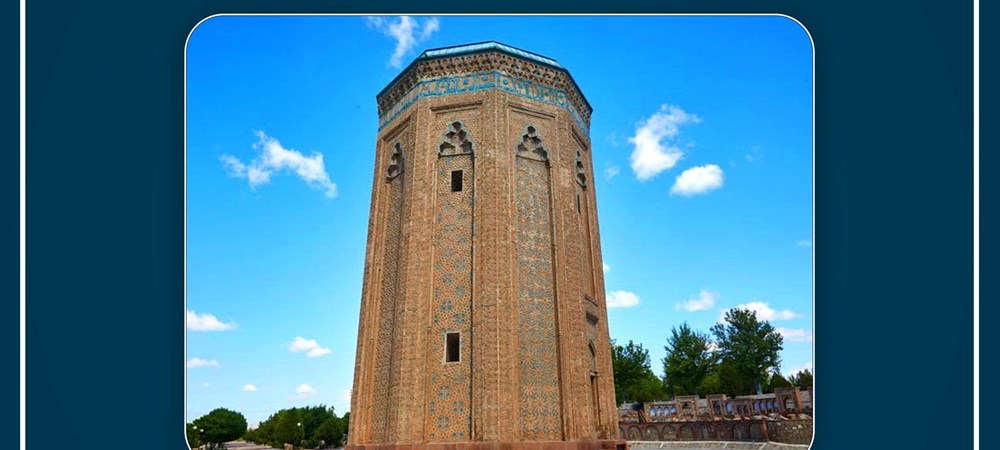Momina Khatun sepulcher. April 18th is the International Day of Monuments and Historic Sites.
Momina Khatun's sepulcher stands as a significant historical and architectural edifice situated within the environs of Nakhchivan city, located in the Nakhchivan Autonomous Republic. Commonly recognized as the "Atabey Dome," this structure has been duly acknowledged as a globally significant monument by the Ministry of Culture of the Republic of Azerbaijan. Furthermore, it was inscribed on UNESCO's reserve list in 1998 alongside other tombs in the Nakhchivan region.
Initially erected in 1186 by the skilled architect Ajami Nakhchivani, the tomb boasted a towering stature of 34 meters. Regrettably, the tent-like dome has not withstood the passage of time, resulting in a current height of 25 meters. Nonetheless, Momina Khatun's sepulcher remains the sole architectural relic from the Atabaylar Architectural Complex to endure through the ages.
The fundamental configuration of the mausoleum comprises a vault and an octagonal tower. Ajami, in his design, eschewed intricate embellishments within the tower's interior, instead favoring numerical harmony and structural integrity. The tomb's low platform, adorned with large, polished diorite slabs, assumes a decagonal form.
In an effort to preserve the pristine geometrical elegance of the tomb's tower-like structure, the architect purposefully avoided sharp delineations between the entrance facade and the remaining surfaces. The entrance, a rectangular door set within a shallow pointed arch, bears a brick inscription inscribed in Kufic script above it, contributing to the site's historical and aesthetic significance.












